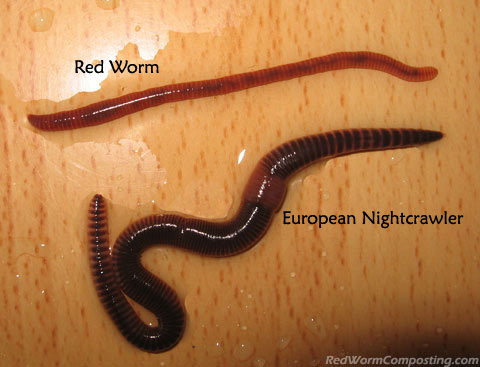European Nightcrawlers
Ever wondered why gardeners and fishing enthusiasts get so excited about European Nightcrawlers? These remarkable creatures, scientifically known as Eisenia hortensis, have earned their reputation as nature’s ultimate soil engineers and fishing companions. Whether you’re a budding gardener, passionate about composting, or an avid angler, European Nightcrawlers might just become your new best friends.
The Fascinating World of European Nightcrawlers
Let’s start with a bit of history that might surprise you. The name “Eisenia” isn’t just a random scientific label – it actually honours Gustav Eisen, a Swedish professor who contributed significantly to our understanding of these incredible creatures. The second part of their name, “hortensis,” comes from Latin and literally means “of the garden.” Talk about a perfectly fitting name for these garden-dwelling champions!
Interestingly, if you’re chatting with European worm enthusiasts, you might hear them refer to European Nightcrawlers as Dendrobaena veneta. Don’t let this confuse you – it’s the same wonderful worm, just with a different name across the pond. They’re proud members of the Lumbricidae family, sharing their heritage with many other beneficial earthworms.
What Makes Euro’s Stand Out?
Picture this: a robust worm with a stunning bluish-pink body, complemented by a cream-colored belly that catches your eye. That’s your European Nightcrawler! These impressive creatures can grow up to 15 centimetres long, sporting distinctive stripes along their back that make them easy to identify among their earthworm cousins.
But here’s where it gets really interesting – European Nightcrawlers are like the escape artists of the worm world. When they sense danger, they can disappear into the soil faster than you can blink. And if things get really dicey? They’ve got a fascinating trick up their sleeve (well, if they had sleeves): they can actually drop their tail to escape predators! Talk about a clever survival strategy.
Masters of Adaptation
One of the most remarkable things about European Nightcrawlers is their incredible adaptability. Think of them as the all-weather champions of the worm world. Whether you’re dealing with subtropical heat or cooler temperatures, these hardy creatures find a way to thrive. This adaptability makes them perfect for various climates and conditions, which is great news for worm farmers and gardeners across different regions.
The Composting Superheroes
When it comes to composting, European Nightcrawlers are true professionals. As epigeic worms (surface dwellers), they excel at breaking down organic matter into rich, nutritious compost. While they might work a bit slower than their cousins, the Eisenia fetida (Tiger Worms), they make up for it by creating exceptionally high-quality vermicompost that your garden will absolutely love.
European Nightcrawlers vs. Other Worm Species
Let’s clear up some common confusion. You might look at a European Nightcrawler and think it’s a Common Earthworm (Lumbricus terrestris), but there’s a key difference. While Common Earthworms are like underground miners, creating vertical burrows deep in the soil, European Nightcrawlers prefer to stay closer to the surface, making them perfect for composting bins and garden beds.
Speaking of relatives, European Nightcrawlers share many characteristics with their smaller cousins, the Tiger Worms (Eisenia fetida). However, there’s one notable difference – European Nightcrawlers don’t produce the distinctive odour that Tiger Worms release when threatened. This makes them a bit more pleasant to handle and particularly great for fishing!

The Art of Breeding European Nightcrawlers
If you’re thinking about breeding European Nightcrawlers, here’s what you need to know: these worms take their time when it comes to reproduction. They produce about one to two cocoons weekly, with each cocoon containing a single baby worm. While this might seem slow compared to other composting worms, it actually makes population management much easier.
The journey to maturity takes about 13 weeks, but once your European Nightcrawlers reach breeding age, they’re remarkably low-maintenance. This steady, manageable reproduction rate makes them perfect for both beginners and experienced worm farmers.
Vermicomposting Success with European Nightcrawlers
Want to turn your kitchen scraps into garden gold? European Nightcrawlers are your go-to companions. These industrious workers transform organic waste into light, fluffy vermicompost that’s packed with nutrients. Your plants will thank you for this natural fertilizer boost!
The Angler’s Secret Weapon
For fishing enthusiasts, European Nightcrawlers are nothing short of miraculous. Their substantial size makes them perfect for most fishing hooks, and here’s the best part – they’re incredibly durable in both fresh and brackish water. This means more time fishing and less time replacing bait, making them a favourite among anglers who know their stuff.
Creating the Perfect Home for Your European Nightcrawlers
Setting up a comfortable habitat for Euro’s isn’t rocket science, but there are some key things to keep in mind. They appreciate a spacious bin with plenty of surface area – think wide rather than deep. Fill it with a mix of:
- Kitchen scraps (fruits and vegetables)
- Shredded paper or cardboard
- Pre-composted organic garden waste
- Coffee grounds
This diverse menu keeps your worms happy and productive while creating rich, balanced compost.
Troubleshooting Common Challenges
Even the most experienced worm farmers encounter issues occasionally. If your European Nightcrawlers seem unhappy, check for these common problems:
- Unpleasant odours (usually indicating poor air circulation)
- Excess moisture (worms should be damp but not waterlogged)
- Temperature extremes (they prefer moderate temperatures)
Most issues can be resolved by adjusting ventilation, moisture levels, or feeding amounts. Remember, a healthy worm bin shouldn’t smell bad – it should have an earthy, forest-floor aroma.
Temperature Management and Environmental Considerations
One of the greatest strengths of Euro’s is their temperature tolerance. While they prefer temperatures between 55-77°F (13-25°C), they can survive brief periods outside this range. This resilience makes them excellent choices for year-round composting in many climates.
Fascinating Defence Mechanisms
The survival strategies of European Nightcrawlers are truly remarkable. Beyond their quick-escape burrowing abilities and tail-dropping defence mechanism, they also respond to vibrations in the soil. This sensitivity helps them avoid predators and adverse conditions, contributing to their success as a species.
Why European Nightcrawlers Are the Perfect Choice
Whether you’re a gardener, composter, or angler, European Nightcrawlers offer unmatched versatility. Their combination of size, hardiness, and composting efficiency makes them an excellent choice for various applications. They’re easy enough for beginners to raise successfully, yet productive enough to satisfy experienced users.
Conclusion
European Nightcrawlers truly deserve their reputation as nature’s garden helpers and fishing companions. Their versatility, hardiness, and effectiveness in both composting and fishing applications make them an excellent choice for various purposes. Whether you’re starting your first worm bin or expanding your existing operation, these remarkable creatures offer the perfect balance of ease of care and productive output.
Remember, success with European Nightcrawlers comes down to understanding their basic needs and providing a suitable environment. With proper care, these incredible worms will reward you with rich compost, successful fishing trips, and the satisfaction of participating in one of nature’s most efficient recycling systems.
FAQ’s
How can I tell if I have genuine European Nightcrawlers?
Look for their distinctive bluish-pink colouring, cream-colored underside, and noticeable striping along their back. Adult worms should be robust and reach significant lengths compared to common composting worms.
What’s the ideal feeding schedule for European Nightcrawlers?
Start with small amounts of food and observe how quickly they consume it. It’s better to underfeed initially and adjust upward than to overwhelm your bin with excess food. A good rule of thumb is to wait until most of the previous feeding has been consumed before adding more.
Can European Nightcrawlers survive winter outdoors?
While they’re hardy worms, it’s best to protect them from extreme temperatures. In cold climates, move bins to a garage or basement, or insulate outdoor bins during winter months.
How long do European Nightcrawlers live?
Under optimal conditions, these worms can live for several years, making them a long-term investment for your composting or fishing needs.





Comments are closed.